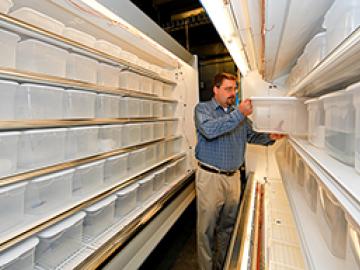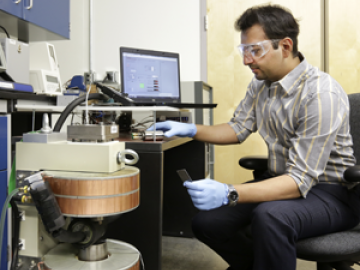Filter News
Area of Research
- (-) Biology and Soft Matter (4)
- (-) Building Technologies (2)
- Advanced Manufacturing (5)
- Biological Systems (1)
- Biology and Environment (102)
- Chemical and Engineering Materials (3)
- Chemistry and Physics at Interfaces (7)
- Clean Energy (168)
- Climate and Environmental Systems (7)
- Computational Biology (1)
- Computational Chemistry (5)
- Computational Engineering (1)
- Computer Science (3)
- Data (1)
- Earth Sciences (1)
- Electricity and Smart Grid (1)
- Energy Frontier Research Centers (7)
- Fuel Cycle Science and Technology (2)
- Functional Materials for Energy (8)
- Fusion and Fission (32)
- Fusion Energy (7)
- Geographic Information Science and Technology (1)
- Isotopes (21)
- Materials (122)
- Materials for Computing (13)
- Materials Synthesis from Atoms to Systems (8)
- Materials Under Extremes (7)
- National Security (45)
- Neutron Data Analysis and Visualization (2)
- Neutron Science (72)
- Nuclear Science and Technology (27)
- Quantum Condensed Matter (3)
- Quantum information Science (4)
- Renewable Energy (2)
- Sensors and Controls (2)
- Supercomputing (153)
- Transportation Systems (4)
Media Contacts

ORNL biogeochemist Elizabeth Herndon is working with colleagues to investigate a piece of the puzzle that has received little attention thus far: the role of manganese in the carbon cycle.

Plants and other biomass can be converted into a variety of renewable high-value products including carbon fibers, plastics, and liquid fuels such as ethanol and biodiesel that are beneficial for reducing petroleum use and vehicle emissions. Breaking down plants in order to release...

Keeping food fresh is no easy feat. Trials of transporting ice over long distances and the hazards of systems that rely on toxic gases riddle the pages of refrigeration history. And although cooling science has come a long way in the past two centuries, modern refrigeration has an environmental cost...

The Spallation Neutron Source at the Department of Energy’s Oak Ridge National Laboratory broke records for sustained beam power level as well as for integrated energy and target lifetime in the month of June.

The American Conference on Neutron Scattering returned to Knoxville this week, 12 years after its inaugural meeting there in 2002.

Not much has changed in refrigeration technology in the past 100 years, until now. Researchers with Oak Ridge National Laboratory’s Building Technologies Program have partnered with General Electric (GE) Appliances through a cooperative research and development agreement (CRADA) to revolutionize home refrigerators using magnetocaloric cooling.




